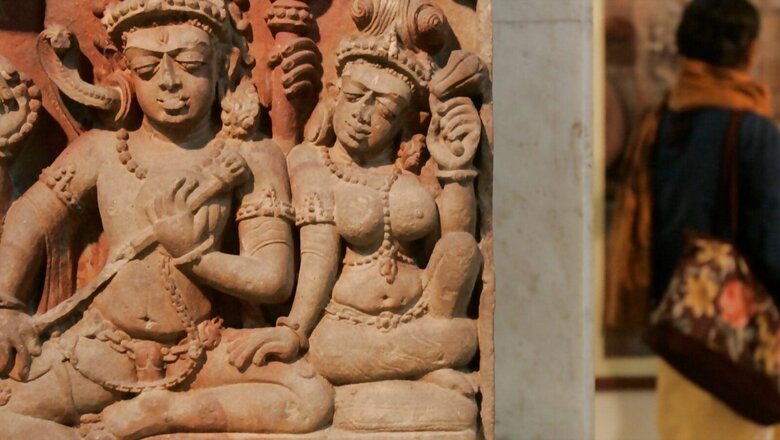
views
The Narendra Modi government is planning to set up a world-class centralised storage facility, spread over around 2 lakh square feet, for 1.95 lakh antiquities of the National Museum once the gallery is relocated as proposed to the North and South Blocks as part of the Central Vista plan.
News18.com has accessed exclusive details of the plan, under which the government also envisions to expand this centralised storage facility to 5 lakh square feet in the future to cater to the needs of other museums, institutions and the Archaeological Survey of India.
“It is envisaged that such a central storage facility may be designed in a way that it shall be able to cater to the need of the next 100 years. This storage, which may be located away from the city, shall also serve as secured repository for all national treasures. The concept of creating a centralised storage, delinked from the museum, is the current global trend and many developed countries like Germany, France and The Netherlands have already developed national repositories,” says an Expression of Interest (EoI) floated by the National Museum on October 14.
Questions had been raised earlier on the fate of nearly 2.06 lakh antiquities of the National Museum once it is relocated to the North and South Blocks under the Central Vista plan. Presently, only 7,000 of these objects are on display at the National Museum, while the rest are stored there in an area of 45,000 square feet.
The EoI, viewed by News18.com, proposes to relocate the National Museum to the North and South Blocks where a “new museum aggregating all museums of India and depicting the making of India will be established”.
Around 8,000-10,000 objects of the National Museum will be displayed in the ‘New National Museum of India’, while the rest of the 1.95 lakh objects will need to be preserved.
There has also been concern over the fate of the artefacts at the Indira Gandhi National Centre for the Arts (IGNCA) and the National Archives Annexe, if these buildings have to make way for the Central Vista. In May this year, a group of 70 intellectuals had also written to the Prime Minister asking how the National Museum art objects will be stored and eventually displayed.
The Big Plan
The National Museum is seeking the help of an agency which will study the category, nature and quantum of antiquities of the National Museum and conceptualise an appropriate storage facility with state-of-the-art technology and adhering to international standards and best practices. The new storage facility will ensure safekeeping of invaluable objects, have customised climatic conditions, a real-time monitored security system, including disaster-proofing and RFID tagging of objects, a full-fledged conservation laboratory for periodic checking of objects and conducting need-based conservation.
“The designing of a storage facility for museums requires special consideration as the value of the contents in the storage building often far exceeds the value of the building itself. Even a minor shortfall in building performance with respect to heat, air and moisture control can compromise the collections and lead to irreversible damage,” the EoI document specifies.
It says that the existing National Museum buildings were built in 1960, and over the years, the number of objects in collection have grown substantially leading to acute shortage of space and storage infrastructure.
“Also, the existing storage space is not fully disaster-proof. Current storage space is around 45,000 square feet that includes open space for keeping stone sculptures. The display area at National Museum is 1.5 lakh square feet,” the EoI says.
Hence, to cater to the need of customised storage for National Museum objects, which are not on display, a dedicated and customised reserve store delinked from any museum space has been proposed. “Reserve store is not accessible to general public, thus, it is preferred to have the storage delinked from public facilities like museum,” the document says.
The objects in the collection at the National Museum belong to various dynasties and periods ranging from pre-historic era (10,000 BCE), the Indus Valley civilisation (5,000-1,800 BCE) to as recent as 1,900 CE. These include metallic numismatics and epigraphy items, central Asian antiquities, paintings, manuscripts, arms, stone and terracotta archaeology items, organic and wood anthropology items as well as pre-history stones and stuccos.
The selected agency in question will first prepare and submit an approach paper with a conceptual design of the proposed facility for evaluation and approval by an expert committee appointed by the Ministry of Culture. This will be followed by preparation of a detailed project report after approval and the agency may also serve later as a project management consultant.
Read all the Latest News , Breaking News and IPL 2022 Live Updates here.



















Comments
0 comment